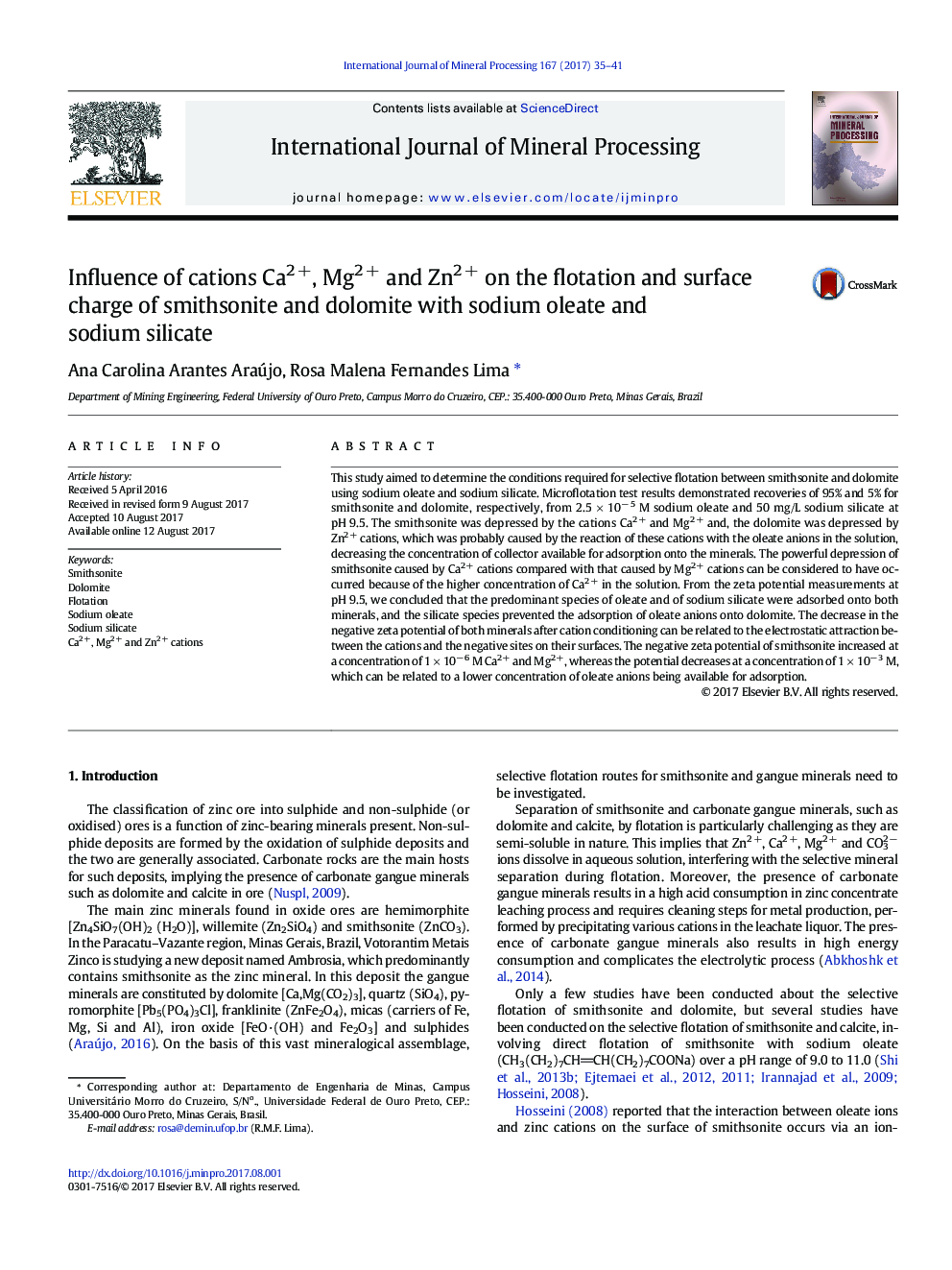| Article ID | Journal | Published Year | Pages | File Type |
|---|---|---|---|---|
| 4769430 | International Journal of Mineral Processing | 2017 | 7 Pages |
Abstract
This study aimed to determine the conditions required for selective flotation between smithsonite and dolomite using sodium oleate and sodium silicate. Microflotation test results demonstrated recoveries of 95% and 5% for smithsonite and dolomite, respectively, from 2.5 Ã 10â 5 M sodium oleate and 50 mg/L sodium silicate at pH 9.5. The smithsonite was depressed by the cations Ca2 + and Mg2 + and, the dolomite was depressed by Zn2 + cations, which was probably caused by the reaction of these cations with the oleate anions in the solution, decreasing the concentration of collector available for adsorption onto the minerals. The powerful depression of smithsonite caused by Ca2 + cations compared with that caused by Mg2 + cations can be considered to have occurred because of the higher concentration of Ca2 + in the solution. From the zeta potential measurements at pH 9.5, we concluded that the predominant species of oleate and of sodium silicate were adsorbed onto both minerals, and the silicate species prevented the adsorption of oleate anions onto dolomite. The decrease in the negative zeta potential of both minerals after cation conditioning can be related to the electrostatic attraction between the cations and the negative sites on their surfaces. The negative zeta potential of smithsonite increased at a concentration of 1 Ã 10â 6 M Ca2 + and Mg2 +, whereas the potential decreases at a concentration of 1 Ã 10â 3 M, which can be related to a lower concentration of oleate anions being available for adsorption.
Related Topics
Physical Sciences and Engineering
Chemical Engineering
Chemical Engineering (General)
Authors
Ana Carolina Arantes Araújo, Rosa Malena Fernandes Lima,
